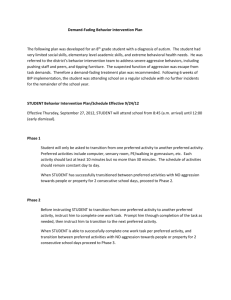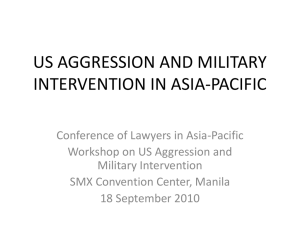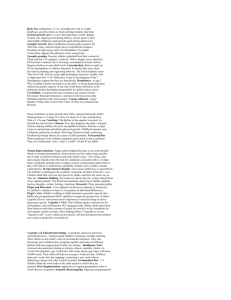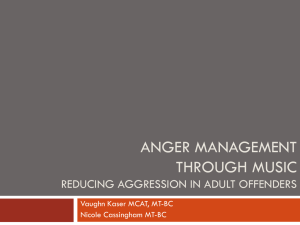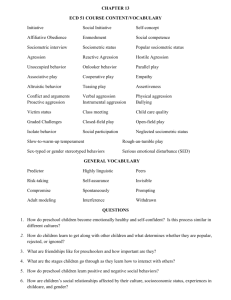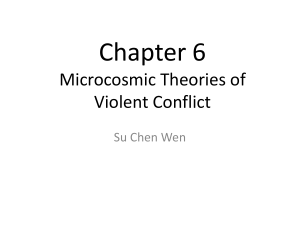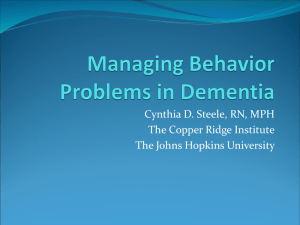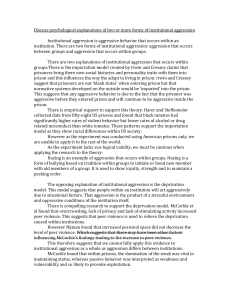Classroom Beeper System Behavior Management System
advertisement
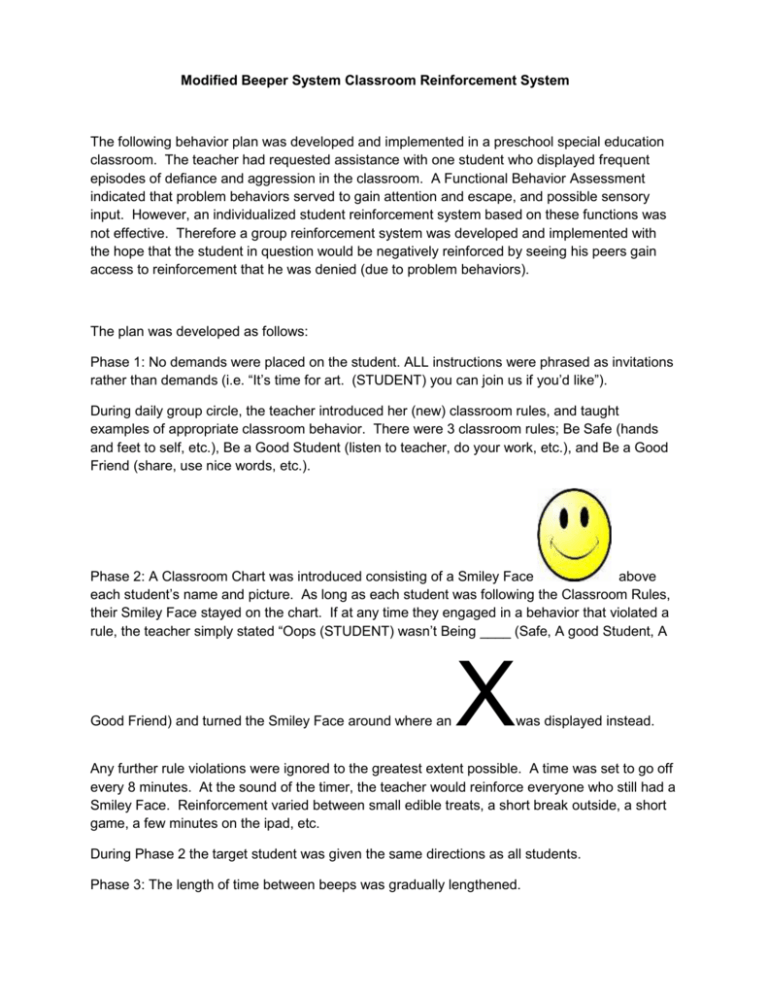
Modified Beeper System Classroom Reinforcement System The following behavior plan was developed and implemented in a preschool special education classroom. The teacher had requested assistance with one student who displayed frequent episodes of defiance and aggression in the classroom. A Functional Behavior Assessment indicated that problem behaviors served to gain attention and escape, and possible sensory input. However, an individualized student reinforcement system based on these functions was not effective. Therefore a group reinforcement system was developed and implemented with the hope that the student in question would be negatively reinforced by seeing his peers gain access to reinforcement that he was denied (due to problem behaviors). The plan was developed as follows: Phase 1: No demands were placed on the student. ALL instructions were phrased as invitations rather than demands (i.e. “It’s time for art. (STUDENT) you can join us if you’d like”). During daily group circle, the teacher introduced her (new) classroom rules, and taught examples of appropriate classroom behavior. There were 3 classroom rules; Be Safe (hands and feet to self, etc.), Be a Good Student (listen to teacher, do your work, etc.), and Be a Good Friend (share, use nice words, etc.). Phase 2: A Classroom Chart was introduced consisting of a Smiley Face above each student’s name and picture. As long as each student was following the Classroom Rules, their Smiley Face stayed on the chart. If at any time they engaged in a behavior that violated a rule, the teacher simply stated “Oops (STUDENT) wasn’t Being ____ (Safe, A good Student, A Good Friend) and turned the Smiley Face around where an X was displayed instead. Any further rule violations were ignored to the greatest extent possible. A time was set to go off every 8 minutes. At the sound of the timer, the teacher would reinforce everyone who still had a Smiley Face. Reinforcement varied between small edible treats, a short break outside, a short game, a few minutes on the ipad, etc. During Phase 2 the target student was given the same directions as all students. Phase 3: The length of time between beeps was gradually lengthened. Results: The target student was initially referred to the districts behavior team during the 2011-2012 school year. Multiple interventions were attempted without success. He was again referred to the behavior team in September of the 2012-2013 school year. Baseline data on aggression, using a 5-point scale where 5=severe aggression and 1= No aggression, showed aggression steadily at 1 “5”. During Phase 1, where demands were removed, aggression dropped significantly, leveling out at “1”. When Phase 2 was introduced, a light spike in aggression occurred for the first 2 days of implementation, and dropped quickly to a “1”. A slight spike was seen again surrounding the 2week Christmas break, and leveled off to a “1” again for the remainder of the year. During Phase 3 the teacher was able to gradually reduce the frequency of beeper intervals to 30 minutes. The following was included in his IEP in May 2013: (STUDENT) is able to enter the classroom and follow the entering routine including hanging up his back pack, washing his hands, signing himself in, and obtaining a book. He sits independently at circle time and attends to instruction. He participates throughout circle including singing songs, counting peers, and finishing routine phrases in a story. (STUDENT) has a history of behavioral outbursts in the classroom and had been monitored by the school district behavioral interventionist. His behaviors included; high activity levels, not completing teacher request and behavior outbursts including hitting and kicking teachers. His current behavior plan has been very effective and has modified his behavior greatly. The Plan includes: All of the students in the class are on a chart with a happy face under their picture. There are three class rules. If a rule is broken the student’s happy face is changed to a X. There is a class timer that rings, and if the student has a happy face they receive a tangible reward (Ipad time, candy, sticker). When the program started the timer went off every 8 minutes resulting in a card turned 2 to 3 times per day. Now the duration has been increased to 30 minutes. (STUDENT’s) card is turned approximately 2 times per week. It is very upsetting to him and he is starting to work through the frustration, the time on the timer is often decreased so that rewards can be administered and he can start over. (STUDENT) does very well with high structure and predictable routines). This teacher made sure to vary the rewards so that sometimes the student only lost a sticker rather than ipad time, and varied reinforces well. (See the PTR Rating Scale Sample attached which shows the data on aggression for this student from October 2012 – April 2013.


